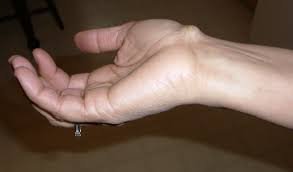That intriguing headline points to a common, and often misunderstood, bodily quirk. Here’s a detailed explanation of what that bump on your wrist likely is.
It’s Probably a Ganglion Cyst
That “not random” bump is almost certainly a ganglion cyst (also sometimes called a Bible cyst). They are the most common type of soft-tissue lump to form on the hand and wrist.
What Exactly Is a Ganglion Cyst?
-
It’s a Sac of Jelly: A ganglion cyst is a non-cancerous, fluid-filled sac that forms out of a joint or the tendon sheath (the tunnel that surrounds a tendon).
-
The “Jelly” is Joint Fluid: The thick, sticky, clear fluid inside is very similar to, or the same as, the synovial fluid that lubricates your joints and tendons.
-
It’s Not a Tumor: This is the most important thing to know. It is not malignant and will not spread to other parts of your body.
Why Does It Form? (The “Isn’t Random” Part)
The exact cause is unknown, but it’s not entirely random. They are thought to be the result of:
-
A Weak Spot: Imagine the joint capsule or tendon sheath as a balloon. A ganglion cyst forms when the thick synovial fluid leaks out through a microscopic weak spot, creating a small balloon-like structure. The “stalk” of this balloon may still be connected to the joint.
-
Often Linked to Stress or Trauma: While they can appear with no cause at all, they are frequently associated with:
-
Repetitive stress or irritation to the joint (e.g., from certain jobs or activities like gymnastics).
-
A single injury or trauma to the wrist joint.
-
Underlying joint conditions like arthritis.
-
Key Characteristics of a Ganglion Cyst:
-
Location: Most commonly on the back of the wrist, but also frequently on the palm side of the wrist, at the base of a finger (where it looks like a small water balloon), or on the top of the finger’s end joint.
-
Shape and Size: They can be round or oval. Their size can change; they may grow larger with increased activity and get smaller with rest. Some are so small you can feel them but not see them (occult ganglions).
-
Texture: They are typically firm but slightly spongy to the touch.
-
Pain: They are often painless. However, if a cyst presses on a nearby nerve—even a tiny one—it can cause pain, tingling, numbness, or muscle weakness.
What To Do About It (And What NOT To Do)
First Step: See a Doctor
It’s essential to get a proper diagnosis. A doctor (usually your primary care physician, a dermatologist, or an orthopedist) can usually diagnose a ganglion cyst with a simple physical exam (they often transilluminate, meaning a light shined through them will pass through the fluid). Sometimes, an ultrasound or MRI is used to confirm.
Treatment Options: Often, “Wait and See” is Best
Many ganglion cysts go away on their own without any treatment.
-
Observation: If the cyst isn’t painful or interfering with movement, the best course of action is often to leave it alone.
-
Immobilization: Since activity can make the cyst larger, wearing a wrist splint can help relieve symptoms and sometimes cause the cyst to shrink.
-
Aspiration: A doctor can drain the fluid from the cyst with a needle. This is a simple procedure, but the cyst often returns because the “root” or connection to the joint remains.
-
Surgery: Surgical removal (excision) is an option for cysts that are painful, cause numbness, or limit movement. The procedure involves removing the cyst along with a portion of the joint capsule or tendon sheath from which it arises to try and prevent recurrence.
⚠️ The Famous “Home Remedy” (And Why You Shouldn’t Do It)
For centuries, people have treated ganglion cysts by striking them sharply with a heavy book (like a Bible, hence the nickname “Bible cyst”). The goal was to rupture the cyst and disperse the fluid.
This is strongly discouraged by doctors because it is:
-
Ineffective: It often fails to remove the root connection, so the cyst returns.
-
Dangerous: You can cause significant trauma to the surrounding tissues, bones, blood vessels, and nerves.
-
Painful: It hurts! And it can lead to infection or other complications.
In short, that bump on your wrist isn’t random—it’s a common, usually harmless, fluid-filled sac with a logical, if not fully understood, origin. The best course of action is to get it checked by a professional for peace of mind and to discuss the best options for you.
